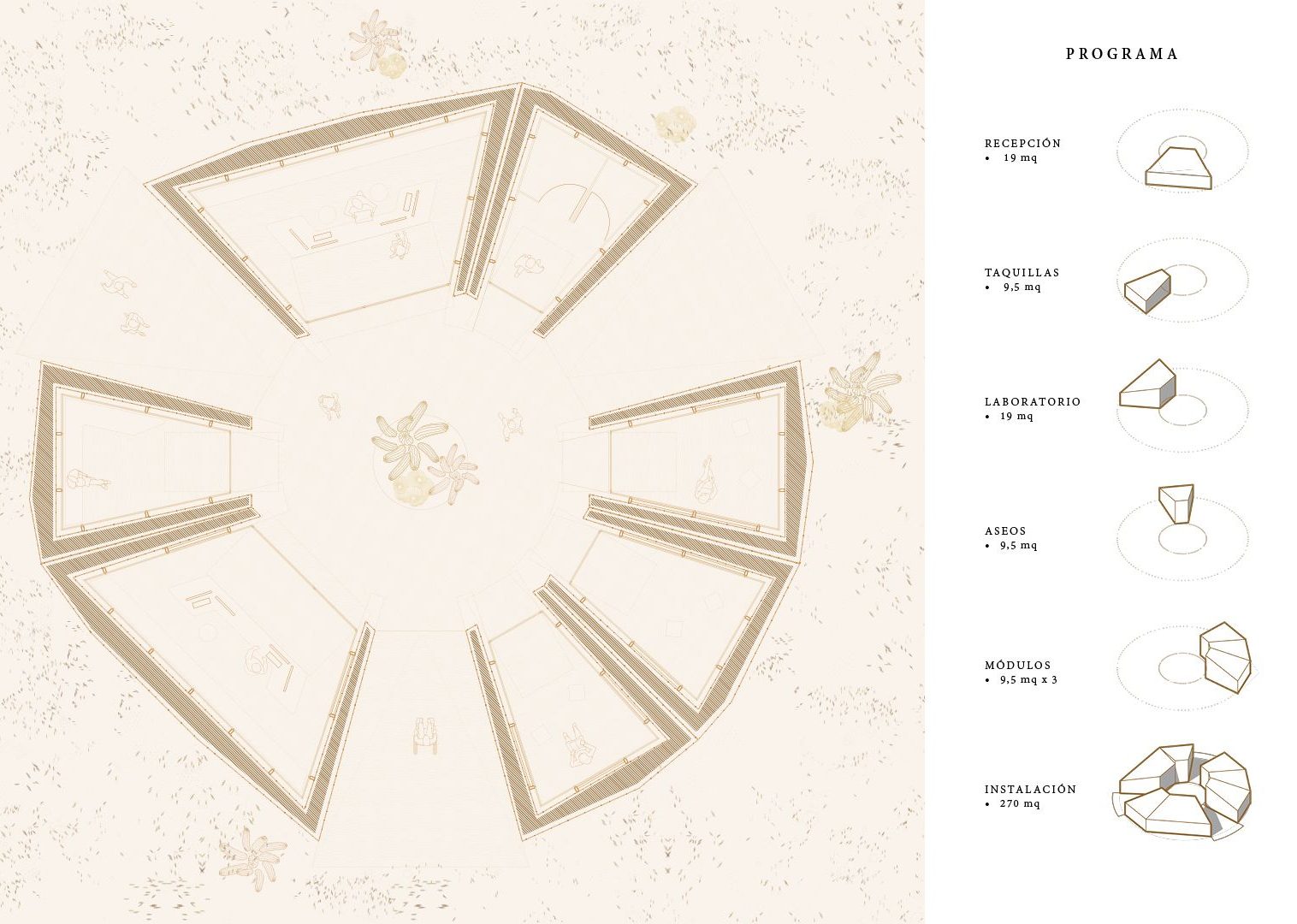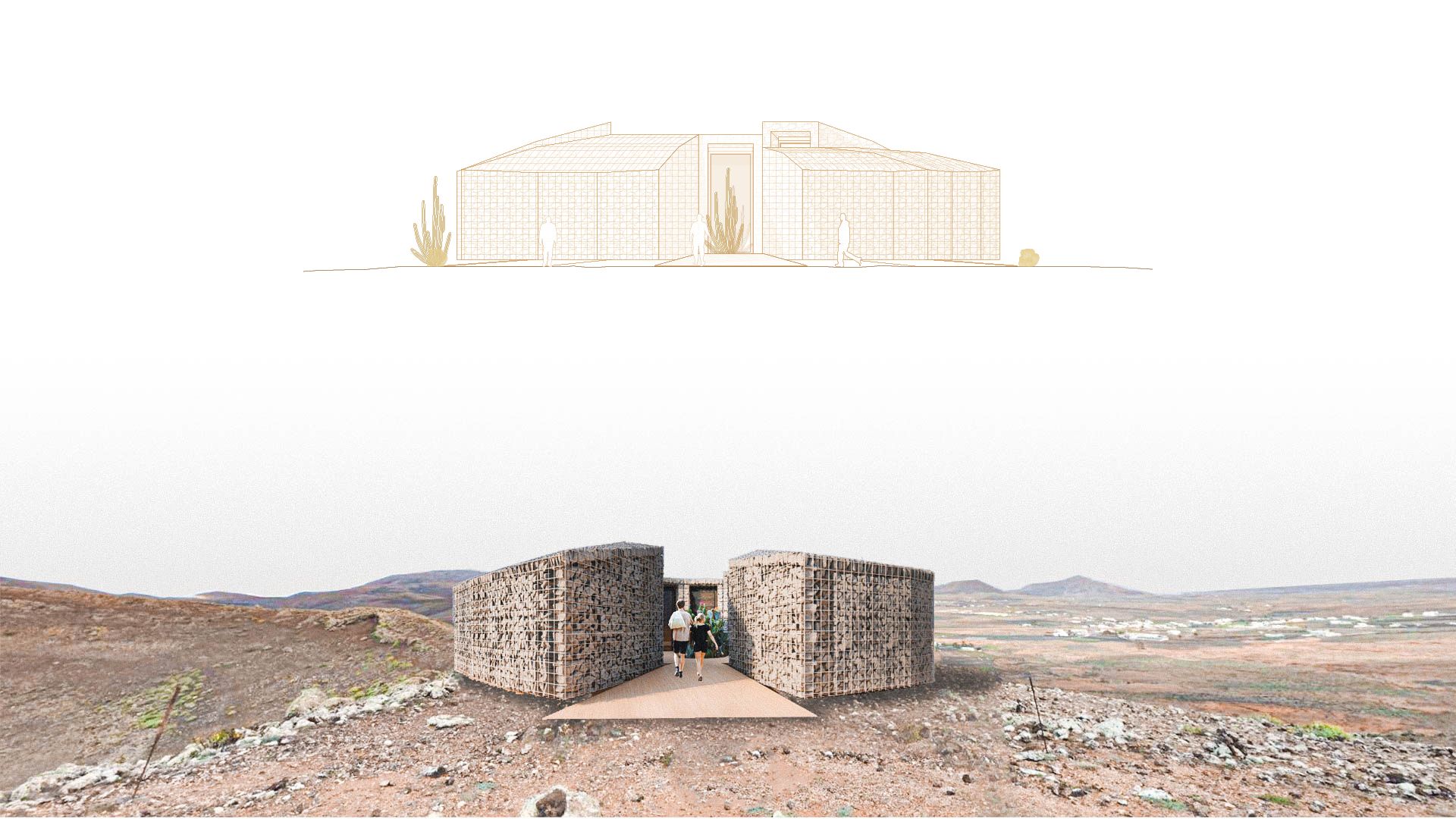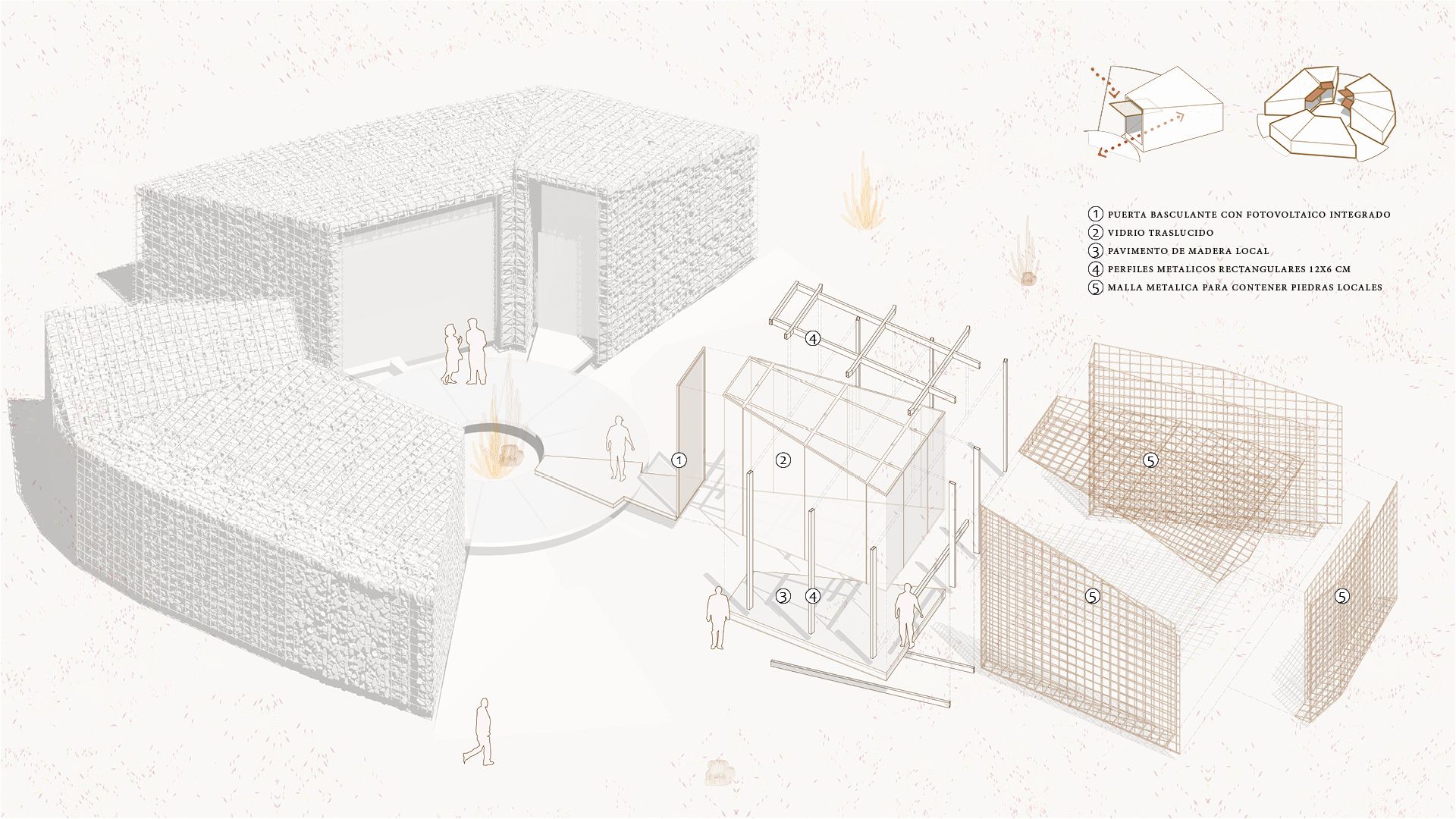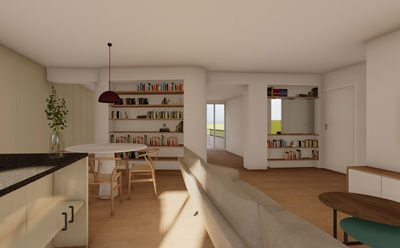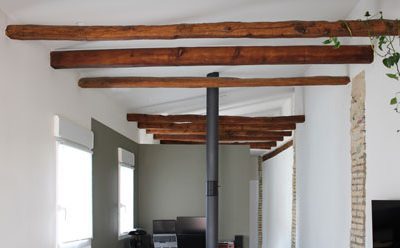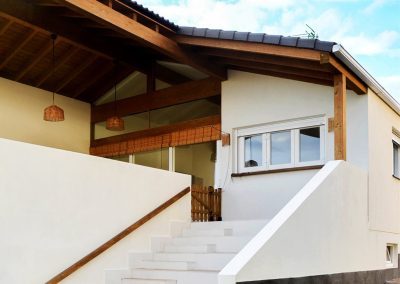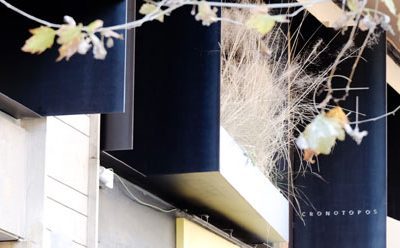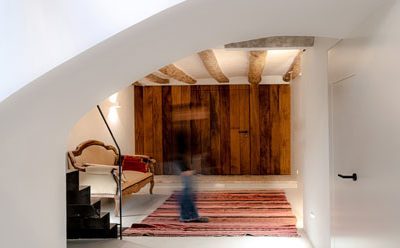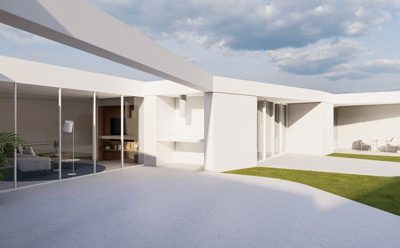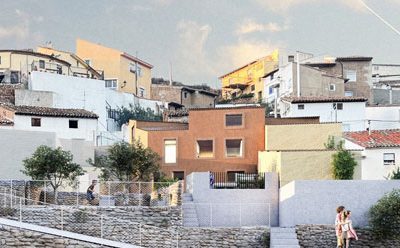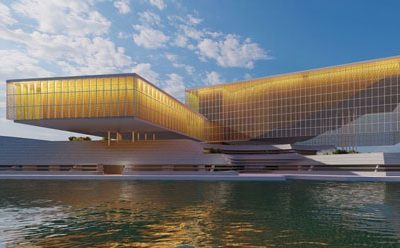
Footprint and Origin
Architectural idea competitions
“Originality consists in returning to the origin; thus, originality is that which returns to the simplicity of the first solutions.” Antonio Gaudí.
Client: CEIT
Surface area: 270 m2
Status: 1st Prize
Timeline: 2022
Location: Lanzarote, Canary Islands
Type of work: Ideas competition
Huella y Origen is our proposal awarded with the first prize in the competition of ideas for the future network of Experience and Tourist Interpretation Centers of the Canary Islands. Our project is committed to a new way of looking at the crater, not only as a trace of the past, but also as a place of historical interest that evokes the origin. The origin of the islands has a very clear chronology, there are three sets of islands, according to their antiquity. The oldest are the eastern islands, Lanzarote and Fuerteventura, followed by the central islands, Gran Canaria, Tenerife and La Gomera, and the youngest islands are La Palma and El Hierro. All of them preserve traces of ancient volcanoes, so history is observed differently in each of them.
As a result of the analysis, the idea of locating it in Lanzarote has arisen, due to its topographic richness, its close link with the origin of the islands and the footprint of its ancient volcanoes, which have turned out to be the driving force behind the proposal. The base center is located inside a crater that represents the memory of the Guanapay volcano, which was part of a line of volcanoes throughout the island. This strategic location allows the project to be connected to the surrounding urban centers, while at the same time allowing the facilities of the Guanapay castle, close to the crater’s boundary, to be rediscovered and used.
As a result of the analysis, the idea of locating it in Lanzarote has arisen, due to its topographic richness, its close link with the origin of the islands and the footprint of its ancient volcanoes, which have turned out to be the driving force behind the proposal. The base center is located inside a crater that represents the memory of the Guanapay volcano, which was part of a line of volcanoes throughout the island. This strategic location allows the project to be connected to the surrounding urban centers, while at the same time allowing the facilities of the Guanapay castle, close to the crater’s boundary, to be rediscovered and used.
The project is made up of several modules; seven are the main islands that make up the Canary Islands archipelago and seven are the modules that make up the tourist quality improvement center: 3 modules for tourists, 1 reception module, 1 laboratory module, 1 toilet module and 1 rest module. The most developed modules are those for tourists. The first module serves the purpose of discovering the island and getting a general idea of the places to visit. The second module focuses on the possibility of creating the route to be followed according to the concerns of each user. Finally, the third module allows you to obtain feedback and experiences from other tourists, in relation to the route created.
The adaptability and modulation of the project is not only in its location, but also in its construction and transportation. The use of local materials makes its construction possible on any of the islands. The modules are made up of two skins, an outer skin, composed of gabions with rocks from the site, and an inner skin, composed of translucent glass that houses interactive screens. In this way, all the interactive elements are on the interior vertical plane and the horizontal plane is left free for tourists to explore the space.
From the beginning, the project has had a sustainable character. Therefore, in addition to using local materials, access to the modules is through an overhead glass door with integrated photovoltaic panels. This solution allows part of the energy consumption to be covered. Although the energy demand is not very high, light is one of the key elements of the project: it enters through the gaps between the gabion rocks and is reflected in the translucent glass. This same situation occurs during the night, but the light is projected outward as well as the rock is visible from the inside.
There is an opportunity to value the history of the islands in a different way, so we are committed to return to the origin and create a project to rediscover the footprint of the Guanapay volcano.


Drawing by Miguel Barriendos García, Junior Architect of Cronotopos Arquitectura
Other Projects




